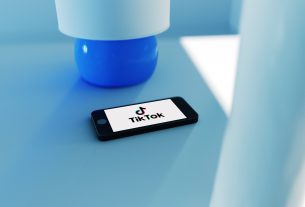As the tides of change continue to shape the modern work landscape, the hybrid workforce model has emerged as an increasingly popular and compelling option for companies worldwide. By offering unparalleled flexibility and cost savings, it’s no wonder that more and more organizations are taking the plunge into this exciting new way of work.
According to a recent survey, a staggering 56% of hiring managers anticipate that hybrid work arrangements will soon become the standard work mode in the foreseeable future. However, with great innovation comes great challenges. For companies transitioning to a hybrid workforce, striking the right balance between remote and in-office work can be one of the most significant obstacles to overcome.
The question arises: how do companies divide their employees’ time most effectively between remote work and office work? In this article, we will dive deep into the myriad of challenges that come with achieving the perfect equilibrium of office and remote productivity, offering insights and strategies to help companies achieve a successful hybrid workforce.
Tips to Achieve Optimal Hybrid Workforce Productivity
Hybrid work is becoming the new norm, and with it comes the challenge of maintaining optimal productivity. Here are some tips to help you achieve just that:
- Set clear communication expectations: Foster a work environment that prioritizes consistent communication and leverages state-of-the-art technology to facilitate seamless collaboration while ensuring each team member has a clear delineation of their duties and obligations.
- Prioritize work-life balance: Empower your workforce to prioritize self-care and maintain a harmonious work-life equilibrium, fortifying against burnout and ensuring sustained productivity.
- Invest in the right technology: Leverage advanced technological tools, including video conferencing, team messaging applications, and project management software, to facilitate seamless connectivity between employees working remotely and those stationed in-office.
- Foster team building and camaraderie: Plan team building activities, encourage virtual coffee breaks, and provide opportunities for in-person gatherings to help foster a sense of community.
- Provide necessary resources and support: Ensure employees have access to the necessary resources, such as ergonomic office equipment, and provide the necessary support to ensure they can work effectively and efficiently.
By following these tips, you can achieve optimal hybrid workforce productivity and reap the benefits of a successful and sustainable work model.
The Benefits of a Hybrid Workforce
A harmonious interweaving of both physical and virtual workspaces, the hybrid workforce empowers employees with the freedom to work from any locale, providing them with unrivaled flexibility, while granting employers an avenue to curb operational costs. The potential advantages of this pioneering model are infinite. It bridges the great divide between office vs. remote, fostering a new paradigm of work that augments collaboration, promotes productivity, and fuels innovation.
During the time frame of January 25th to February 5th, 2023, an estimated 40% of gainfully employed individuals in Great Britain reported having conducted their work duties remotely at some point over the course of the previous seven days.
To begin with, hybrid work ushers in a new era of work-life balance, granting employees a higher degree of autonomy and agency in managing their personal responsibilities. This newfound control empowers workers to operate more efficiently, increasing productivity and overall job satisfaction.
Hybrid work models not only bring great benefits to organizations but also help the environment by diminishing traffic congestion, air pollution, and greenhouse gas emissions. On the other hand, employers can revel in the advantage of significantly lower overhead costs, including rent, utilities, and office supplies.
Moreover, hybrid workforce models enable organizations to tap into the vast global talent pool, allowing employers to access the most excellent talents worldwide. At the same time, employees can expand their career horizons beyond their geographical boundaries. As a result, hybrid work models are not just a trend but an intelligent solution that supports businesses, the environment, and talented individuals alike.
Challenges of a Hybrid Workforce
In the wake of the COVID-19 pandemic, a seismic shift has occurred in the way we work, and many companies have embraced the hybrid workforce model as a means of adapting to this new reality. While the advantages of this approach are manifold, it is not without its significant hurdles that must be surmounted. Below are outlined some of the most prevalent obstacles faced in implementing this new paradigm and the strategies that can be utilized to overcome them.
- Difficulty in communication and collaboration: Maintaining effective communication and collaboration in a hybrid workforce can be challenging due to the heterogeneity of employees working in the office and remotely. This can lead to misunderstandings, delays, and disharmony among team members, risking sub-optimal outcomes if not addressed.
- Inadequate work-life balance: The convenience of working from home may cause employees to struggle with separating their work and personal lives, leading to an erosion of healthy boundaries that exacerbates stress, exhaustion, and ultimately diminished output.
- Technological issues: To optimize the productivity of a hybrid workforce, a sturdy and dependable technological infrastructure is imperative, guaranteeing seamless communication, collaboration, and unfettered access to vital resources regardless of location. However, sluggish internet speeds, antiquated software, and inadequate hardware are some of the technological challenges that could potentially impede the performance of a hybrid workforce.
- Challenges in team building and morale: Remote work may bring about a sense of seclusion and detachment from the team, causing a detrimental impact on both morale and team-building initiatives. This is particularly arduous for fresh hires who strive to forge camaraderie with their peers. It can be the difference between a smooth transition into the workforce and a lackluster start to their career journey.
Final Thoughts
The rise of the hybrid workforce ushers in a new era of both challenge and opportunity for organizations seeking to thrive. Achieving the optimal balance between office and remote productivity is paramount to success. This can be accomplished through the implementation of clear communication channels, the strategic use of cutting-edge technology, and the cultivation of a culture of work-life balance and team building.
It is the organizations that can recognize the unique advantages of a hybrid workforce and adopt a mindset of adaptability, trust, collaboration, and innovation that will truly excel in this new digital age. By embracing the full potential of the hybrid workforce, these organizations can lay the foundation for growth and success, making them well-positioned for long-term achievement and prosperity.
Featured Image Credit: Photo by Rebrand Cities; Pexels; Thank you!



